Ike’s Warning about America’s Threat to World Peace: The 15 Biggest Pentagon Contractors That Make up the Military-Industrial-Congressional Complex
TRANSCEND MEMBERS, 29 Jul 2019
Gary G. Kohls, MD | Duty to Warn – TRANSCEND Media Service
Out-of-Control Military Spending Since Eisenhower’s Presidency May be the Primary Reason Why the US National Debt is $23,000,000,000,000 (23 trillion) and Counting.
“Until the latest of our world conflicts, the United States had no armaments industry. American makers of ploughshares could, with time and as required, make swords as well…We have been compelled to create a permanent armaments industry of vast proportions.”
“In the councils of government, we must guard against the acquisition of unwarranted influence, whether sought or unsought, by the military-industrial complex. The potential for the disastrous rise of misplaced power exists and will persist.”
–- From the farewell address of President Dwight David Eisenhower – January 17, 1961“The world’s military forces survive primarily as instruments to protect elite interests and suppress the civil unrest that results from economic injustice. They further place an unconscionable burden on the earth’s scarce ecological resources.”
— From “The People’s Earth Declaration: A Proactive Agenda for the Future” (the summary statement of the United Nations Conference on Environment and Development – Rio de Janeiro, Brazil – June 12, 1992)
Images 1 & 2: Blue Angels “Flight Demonstration” teams at work (Note that the phrase “Demonstration Team” is a euphemism that both the US Navy’s Blue Angels and the USAF’s Thunderbirds use instead of “Stunt Flying for Propaganda Purposes”).
The US Navy’s Blue Angels won’t be transitioning to Lockheed-Martin’s (and the Pentagon’s) latest fighter jet boondoggle, the F-35, each of which costs $121,000,000 per each.
According to Popular Mechanics the F-35C was supposed to be “initial operations capable? (ie, “combat war-ready”) at the end of 2015. (Note that “combat war-ready” means that at least a squadron of planes can carry out limited combat operations. That date, according to some watchdog agencies may never come.
Popular Mechanics says that there are other reasons to put off the hoped-for transition to the F-35s:
- Replacing the Blues’ Hornets with Lockheed-Martin’s F-35s would be enormously expensive ($121 million each). Purchasing 11 of them for the “flight demonstration team” would cost $1.34 billion – as much as a new destroyer;
- It’s more cost effective to convert aircraft that have already flown operationally and are already paid for;
- The F-35C isn’t entirely suitable for the Blue Angels propaganda work (the F-35C is a single-seater cockpit and therefore can’t give celebrities rides at their air shows);
- The planned new Blue Angels’ fleet of Boeing’s F/A-18Fs will have two twin seater jets for VIP work.
Besides being major draws in the 70+ air shows in which they do their stunt-flying each year, impressing local celebrities, journalists, news media types, politicians and other non-military personnel by taking them up for demonstration flights is part of the team’s mission, which is “to give the public a better understanding of the what it means to fly the jets”.
Below is the financial information that explains why Wall Street, War Street, the Dow Jones Averages (that lists only 30 of the world’s largest corporations) and the world’s elite investor classes love wars. (Note that the war-fomenting, war-agitating military contractors include every super-wealthy investor around the world whose wealth dramatically increases (and whose stock portfolio value surges) every time the President, the White House or the US Congress threatens military intervention or the Congress reduces the taxes of wealthy political campaign contributors. – GGK
**********************
America’s 15 Biggest Defense Contractors
By Paul Ausick – July 2, 2018
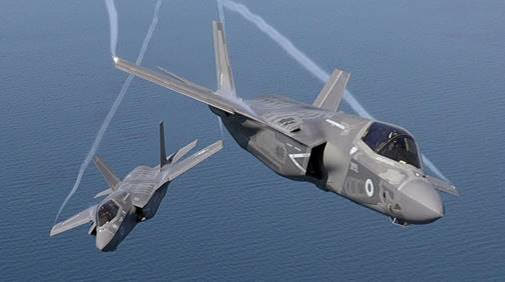
Image 3: Lockheed-Martin’s F-35 Lightning II (note the chemical sprays behind each jet in the 3 images above that are obviously not the so-called “contrails” (short for “condensation trails” that absolutely require extremely high altitudes [<20,000 feet] and extremely low temperatures to become only very transiently and partially visible on only rare occasions.) In addition, any so-called “condensation trail” must come directly out of the jet engine exhaust port, which these photos definitely do not show.
-
Lockheed Martin Corp. (NYSE: LMT)
> 2017 funding obligations: $50.70 billion
> Market cap:$85.15 billion
> Total revenue:$51.05 billion
> Net income: $2.00 billion
> Shares outstanding: 285.57 million
> Employees: approximately 100,000
Lockheed Martin is a pure-play defense contractor. The company builds and sells military aircraft, missiles, drones, fire control systems, helicopters, ships, and space systems. The government accounts for nearly all of Lockheed’s business, as the amount of federal funds obligated to the company accounted for nearly all of its full-year 2017 revenue. Lockheed captured nearly 18% of all federal procurement last year. The company’s headline program is the F-35 Lightning II Joint-Strike Fighter that is projected to haul in $1 trillion over its 60-year lifespan. For the current fiscal year, analysts forecast revenue of $51.33 billion and have a 12-month consensus price target on the stock of $371.89. Lockheed has cut some 26,000 employees since 2015.
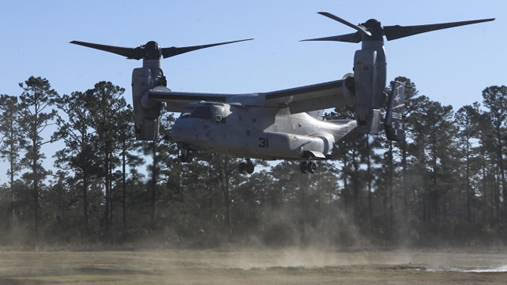
The notorious boondoggle that was/is Boeing/Bell Helicopter’s V-22 Osprey resulted in 12 serious (“hull-loss”) accidents (plus many minor accidents) that resulted in 42 fatalities. During testing of the Osprey (from 1991 to 2000), there were four crashes resulting in 30 fatalities. Since becoming operational in 2007, the V-22 Osprey has had seven serious crashes resulting in 12 fatalities, plus a number of minor incidents. Photo Source: U.S. Marine Corps photo by Cpl. Michelle Reif / defense.gov
-
The Boeing Co. (NYSE: BA)
> 2017 funding obligations: $23.36 billion
> Market Cap:$194.29
> Total Revenue:$93.39 billion
> Net Income: $8.20 billion
> Shares outstanding: 588.45 million
> Employees: approximately 140,800
Military programs, including the KC-46A tanker, the F/A-18 Super Hornet, and Apache combat helicopter, accounted for more than $21 billion of Boeing’s fiscal year 2017 revenue, about 22% of the company’s total revenue. Like most of the other companies on this list, Boeing sells military systems internationally. The company expects $21.5 billion to $22.5 billion in military revenue for this year and has a backlog of $50 billion, 36% of which represents orders from foreign buyers. For the current fiscal year, analysts forecast revenue of $97.88 billion and have a 12-month consensus price target on the stock of $398.13.
-
General Dynamics Corp. (NYSE: GD)
> 2017 funding obligations: $15.34 billion
> Market Cap:$55.80 billion
> Total Revenue:$30.97 billion
> Net Income: $9.56 billion
> Shares outstanding: 296.93 million
> Employees: 98,600
The poster child for General Dynamics is its Abrams main battle tank, but the company’s information systems and technology division accounted for the most revenue. To further bolster that part of the business, GD is paying $9.7 billion, including assumed debt, to acquire military IT specialist CSRA Inc. The deal will create the second largest provider of U.S. military IT services with annual sales of around $9.9 billion. As for those tanks, the company received a $1 billion contract from the U.S. government last year to upgrade 800 of them. For the current fiscal year, analysts forecast revenue of $35.94 billion and have a 12-month consensus price target on the stock of $247.53.
-
Raytheon Company (NYSE: RTN)
> 2017 funding obligations: $14.66 billion
> Market Cap:$56.18 billion
> Total Revenue:$25.35 billion
> Net Income: $2.00 billion
> Shares outstanding: 288.51 million
> Employees: approximately 64,000
Sales to the U.S. government accounted for two-thirds of Raytheon’s total 2017 revenue, and sales to foreign governments accounted for another 13%. The company’s largest division is missile systems, which brought in about $7.8 billion of last year’s revenue. Though there were rumors in the spring of 2017 that Boeing would acquire Raytheon, that did not happen. In addition to its missile business, Raytheon’s strengths include its radar, sensor, and guidance systems, and the company is focusing more on cybersecurity. Its Forcepoint cybersecurity joint venture with Vista Equity Partners racked up $608 million in revenue in 2017 and ended the year with a total backlog of $484 million. For the current fiscal year, analysts forecast revenue of $26.78 billion and have a 12-month consensus price target on the stock of $239.89.
-
Northrop Grumman Corp. (NYSE: NOC)
> 2017 funding obligations: $11.19 billion
> Market Cap:$53.47 billion
> Total Revenue:$25.80 billion
> Net Income: $2.02 billion
> Shares outstanding: 174.09 million
> Employees: 70,000
Northrop Grumman operates in three main divisions: aerospace systems, mission systems, and technology services. The aerospace division manufactures and sells control systems for the F/A 18 (as a partner with Boeing), the B-2 bomber, and the venerable A-10 Warthog. Earlier this month, the company’s $9.2 billion acquisition of Orbital ATK, a maker of solid-fuel rocket engines, was approved by the Federal Trade Commission. Northrop was also awarded a $103 million contract to upgrade the wings on the A-10 ground-attack aircraft, which entered service in 1977. For the current fiscal year, analysts forecast revenue of $27.43 billion and have a 12-month consensus price target on the stock of $367.50.
-
McKesson Corp. (NYSE: MCK)
> 2017 funding obligations: $8.80 billion
> Market Cap:$29.66 billion
> Total Revenue:$208.36 billion
> Net Income: $67 million
> Shares outstanding: 202.05 million
> Employees: 78,000
McKesson primarily distributes medical and pharmaceutical supplies for health care providers and pharmacies around the world. The company is the pharmaceutical prime vendor (PPV) for the Department of Veterans Affairs. Its current contract ends on August 9, and there is a two-year option remaining that the VA may exercise. The contract, originally awarded in 2012, has generated average annual revenue of around $4 billion and could generate a total of $44 billion if extended to 2020. For the current fiscal year, analysts forecast revenue of $216.15 billion and have a 12-month consensus price target on the stock of $171.60.
-
Huntington Ingalls Industries Inc. (NYSE: HII)
> 2017 funding obligations: $7.24 billion
> Market Cap:$9.51 billion
> Total Revenue:$7.44 billion
> Net Income: $479.00 million
> Shares outstanding: 44.79 million
> Employees: approximately 38,000
Huntington Ingalls builds the single most expensive and largest military weapon in the U.S. arsenal, the Gerald R. Ford-class aircraft carrier. The first of four new carriers on order, the Ford was commissioned last year after the company spent $13 billion to build the ship. The fiscal 2019 budget includes $4.5 billion for continuing work on the second and the third carriers that will be christened the John F. Kennedy and the Enterprise. A name has not been selected for the fourth. Eventually, the Ford-class carriers are expected to replace the Navy’s entire current Nimitz-class fleet of 11, guaranteeing Huntington Ingalls a solid decade or so of work. For the current fiscal year, analysts forecast revenue of $7.63 billion and have a 12-month consensus price target on the stock of $254.64.
-
Bechtel Group Inc.
> 2017 funding obligations: $5.53 billion
> Market Cap:N/A
> Total Revenue:$32.90 billion (2016)
> Net Income: N/A
> Shares outstanding: N/A
> Employees: N/A
Bechtel, an engineering and construction firm, is the only privately held company on this list of top defense contractors. In 2015, the company’s largest federal contracts were valued at $2.48 billion with the U.S. Navy and $1.73 billion with the U.S. Department of Energy. Both were related to work on nuclear reactors. The company’s 10-year contract with the Navy, valued at a total of $12.8 billion, expires this year. On the non-military side, Bechtel has worked on two massive liquefied natural gas (LNG) liquefaction facilities: the Sabine Pass project offshore of Louisiana and the Wheatstone project offshore of Northwest Australia. No estimates for the company’s total revenue are available.
-
BAE Systems plc
> 2017 funding obligations: $5.29 billion
> Market Cap:£26.07 billion
> Total Revenue:£18.32 billion
> Net Income: £1.36 billion
> Shares outstanding: 3.19 billion
> Employees: 83,200
BAE is the only non-U.S.-based company among top federal contractors. The British company just won a $198 million contract from the U.S. Marine Corps to build an initial batch of 30 wheeled amphibious combat vehicles out of a planned total of 208. If all are built the contract will be worth about $6.2 billion to BAE, including $1.2 billion to manufacture the vehicles and $5 billion to maintain them over their expected lifespan. For the current fiscal year, analysts forecast revenue of £18.5 billion and have a 12-month consensus price target on the stock of £6.73 per share.
-
L3 Technologies Inc. (NYSE: LLL)
> 2017 funding obligations: $5.15 billion
> Market Cap:$15.04 billion
> Total Revenue:$9.57 billion
> Net Income: $753.00 million
> Shares outstanding: 78.22 million
> Employees: approximately 31,000
L3 makes a wide range of electronic, sensor, and communications systems for military, homeland security, and commercial platforms. The company is also a prime contractor of aerospace systems, security and detection systems, and pilot training. Last year the company won a contract as the systems integrator to modernize the U.S. Air Force’s Compass Call EC-130H aircraft. Despite a Boeing protest, L3 chose General Dynamics’ Gulfstream 550 as the airplane that would carry the sophisticated Compass Call electronic warfare gear. No value for the contract has been released. For the current fiscal year, analysts forecast revenue of $9.99 billion and have a 12-month consensus price target on the stock of $236.93.
-
Leidos Holdings Inc. (NYSE: LDOS)
> 2017 funding obligations: $4.79 billion
> Market Cap:$8.86 billion
> Total Revenue:$10.17 billion
> Net Income: $366.00 million
> Shares outstanding: 151.46 million
> Employees: approximately 31,000
Leidos’ defense solutions group generated nearly half of the company’s 2017 revenue, but U.S. government contracts accounted for 84% of 2017’s total company revenue. In addition to a variety of security and intelligence systems, Leidos recently bested Raytheon in a competition to build a hosted payload for the Federal Aviation Administration’s Galaxy-30 satellite that will sharpen GPS signals. The company is currently battling Amazon, Google, and other technology and defense firms for a Pentagon cloud contract worth as much as $10 billion. The winner of the Joint Enterprise Defense Infrastructure (JEDI) will create and manage a cloud-based application the military will use to host and distribute mission-critical workloads and classified secrets all over the world. For the current fiscal year, analysts forecast revenue of $10.4 billion and have a 12-month consensus price target on the stock of $77.20.
-
Aecom (NYSE: ACM)
> 2017 funding obligations: $4.11 billion
> Market Cap:$5.39 billion
> Total Revenue:$18.20 billion
> Net Income: $339 million
> Shares outstanding: 157.62 million
> Employees: 87,000
Like Bechtel, Aecom is an engineering and construction company with a solid, although not dominant, presence in the federal contract world. One of its current showcase projects is a new Mercedes-Benz Stadium in Atlanta that seats up to 83,000 people for NFL and MLS games. For the U.S. government Aecom provides management services programs and facilities, none of which it discusses in any detail. In May, a wholly owned subsidiary won a $3.1 billion cost-plus-award-fee, 15-year contract with the U.S. Air Force for the operation, maintenance, and sustainment of test and training ranges in California, Utah, Nevada, and Colorado. For the current fiscal year, analysts forecast revenue of $19.67 billion and have a 12-month consensus price target on the stock of $40.54.
- Booz
Allen Hamilton Holding Corp. (NYSE: BAH)
> 2017 funding obligations: $4.09 billion
> Market Cap:$6.42 billion
> Total Revenue:$6.17 billion
> Net Income: $$305.11 million
> Shares outstanding: 5.29 billion
> Employees: approximately 24,600
Booz Allen provides a variety of management and technology consulting services to governments, corporations, and nonprofits worldwide. The company began working with the U.S. Navy in 1940, and the Navy remains its largest client. Work for the Defense Department accounted for 46% of its fiscal year revenue. Booz Allen also provides mission-critical support for the International Space Station and assists commercial and government clients with cyber threats. At least one incident the company would like to forget is its hiring of NSA documents leaker Edward Snowden as a contractor in 2013. For the current fiscal year, analysts forecast revenue of $6.6 billion and have a 12-month consensus price target on the stock of $49.10.
-
Humana Inc.
> 2017 funding obligations: $3.72 billion
> Market Cap:$41.18 billion
> Total Revenue:$53.77 billion
> Net Income: $2.45 billion
> Shares outstanding: 137.68 million
> Employees: approximately 45,900
Humana is one of the country’s largest health insurers, and the company offers administrative services to the Department of Defense through its Tricare program. Beginning in 2016, the company began providing services to about 6 million program beneficiaries in 32 states, with delivery of health care services beginning in January of this year. The five-year contract expires at the end of 2022 and may be renewed at the government’s option. Humana reported military enrollment totaling nearly 3.1 million at the end of 2017. For the current fiscal year, analysts forecast revenue of $56.29 billion and have a 12-month consensus price target on the stock of $316.44.
-
Science Applications International Corp. (NYSE: SAIC)
> 2017 funding obligations: $3.46 billion
> Market Cap:$3.45 billion
> Total Revenue:$4.45 billion
> Net Income: $179.00 million
> Shares outstanding: 42.28 million
> Employees: more than 15,000
SAIC is a pure-play technical services provider to the U.S. government and is the prime contractor of 91% of what the company calls “premier” contract vehicles. These are basically open-ended federal contracts that allow prime contractors to collect a fee for matching a vendor with a government agency. SAIC lists 14 federal contract vehicles under its management, including one to provide advice and assistance to the Army’s Aviation and Missile Command and another to provide IT solutions to the Department of Homeland Security. Even though SAIC lost the bidding for a Marine Corps amphibious combat vehicle to BAE this month, last November the company won a one-year, $980 million Army battlefield systems contract that is renewable for two additional years. For the current fiscal year, analysts forecast revenue of $56.29 billion and have a 12-month consensus price target on the stock of $89.67.
__________________________________________
 Dr Gary Kohls is a retired physician from Duluth, MN, USA and a member of the TRANSCEND Network. In the decade prior to his retirement, he practiced what could best be described as “holistic (non-drug) and preventive mental health care”. Since his retirement, he has written a weekly column for the Duluth Reader, an alternative newsweekly magazine. His columns mostly deal with the dangers of American imperialism, friendly fascism, corporatism, militarism, racism, and the dangers of Big Pharma, psychiatric drugging, the over-vaccinating of children and other movements that threaten American democracy, civility, health and longevity and the future of the planet. Many of his columns are archived at http://duluthreader.com/search?search_term=Duty+to+Warn&p=2; http://www.globalresearch.ca/author/gary-g-kohls; or at https://www.transcend.org/tms/search/?q=gary+kohls+articles; ggkohls@gmail.com
Dr Gary Kohls is a retired physician from Duluth, MN, USA and a member of the TRANSCEND Network. In the decade prior to his retirement, he practiced what could best be described as “holistic (non-drug) and preventive mental health care”. Since his retirement, he has written a weekly column for the Duluth Reader, an alternative newsweekly magazine. His columns mostly deal with the dangers of American imperialism, friendly fascism, corporatism, militarism, racism, and the dangers of Big Pharma, psychiatric drugging, the over-vaccinating of children and other movements that threaten American democracy, civility, health and longevity and the future of the planet. Many of his columns are archived at http://duluthreader.com/search?search_term=Duty+to+Warn&p=2; http://www.globalresearch.ca/author/gary-g-kohls; or at https://www.transcend.org/tms/search/?q=gary+kohls+articles; ggkohls@gmail.com
Tags: Capitalism, Conflict, Economics, Environment, Geopolitics, Hegemony, History, Human Rights, Imperialism, International Relations, Mercenaries, Military, Military Industrial Complex, NATO, Pentagon, Politics, Power, USA, Violence, WMD, War, West, World
This article originally appeared on Transcend Media Service (TMS) on 29 Jul 2019.
Anticopyright: Editorials and articles originated on TMS may be freely reprinted, disseminated, translated and used as background material, provided an acknowledgement and link to the source, TMS: Ike’s Warning about America’s Threat to World Peace: The 15 Biggest Pentagon Contractors That Make up the Military-Industrial-Congressional Complex, is included. Thank you.
If you enjoyed this article, please donate to TMS to join the growing list of TMS Supporters.

This work is licensed under a CC BY-NC 4.0 License.

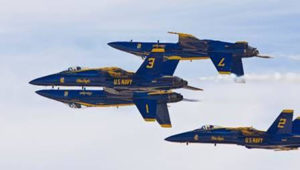
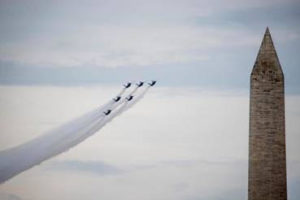

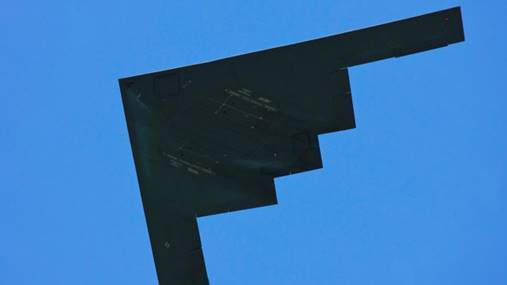
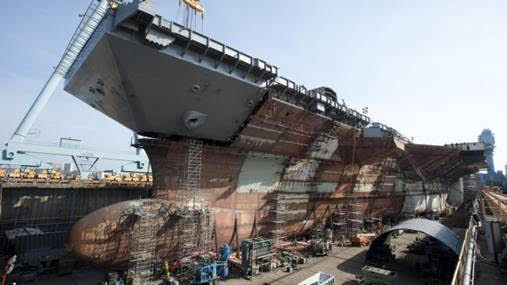
[…] Titolo originale: Ike’s Warning about America’s Threat to World Peace: The 15 Biggest Pentagon Contractors That Ma… […]